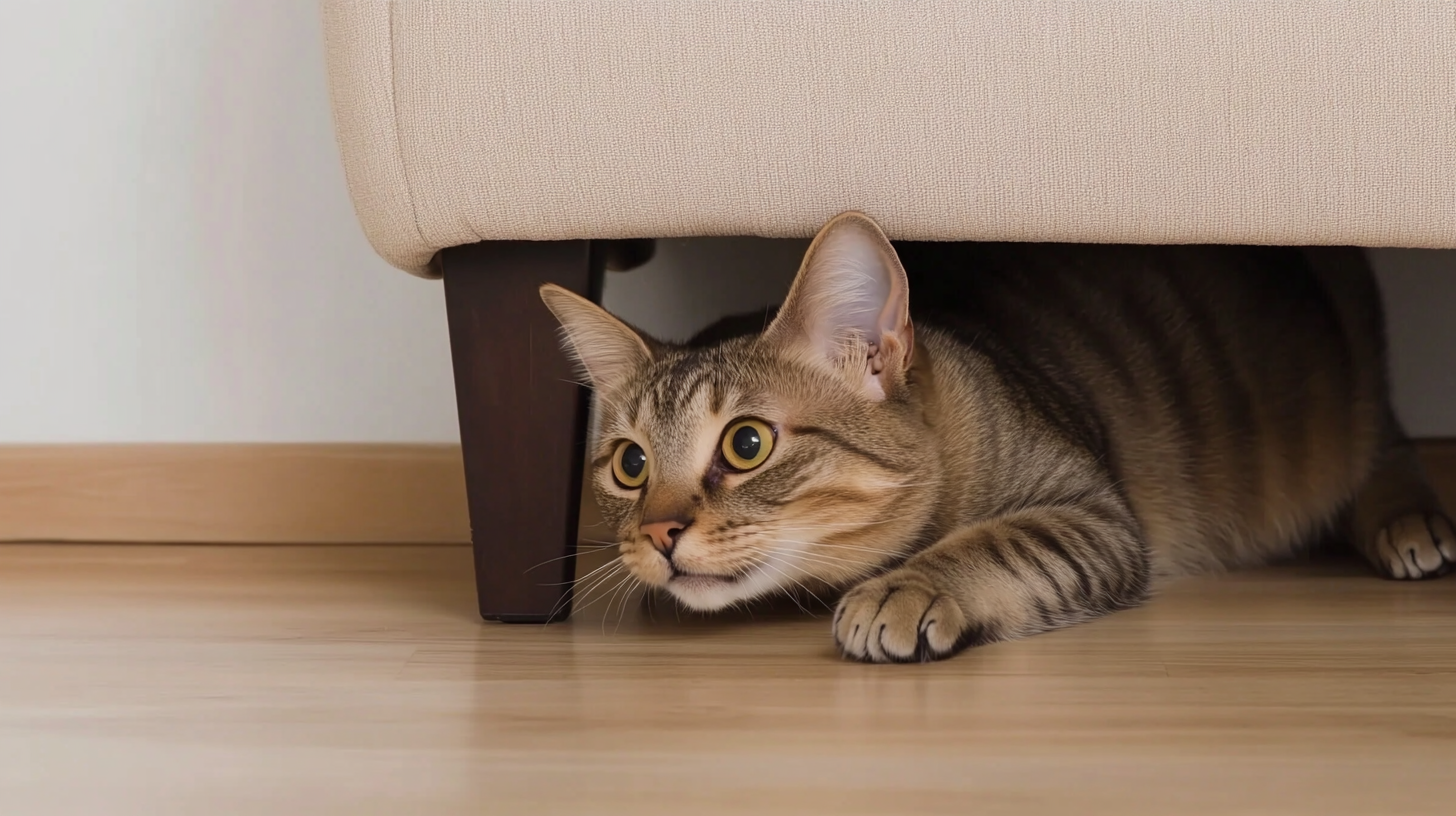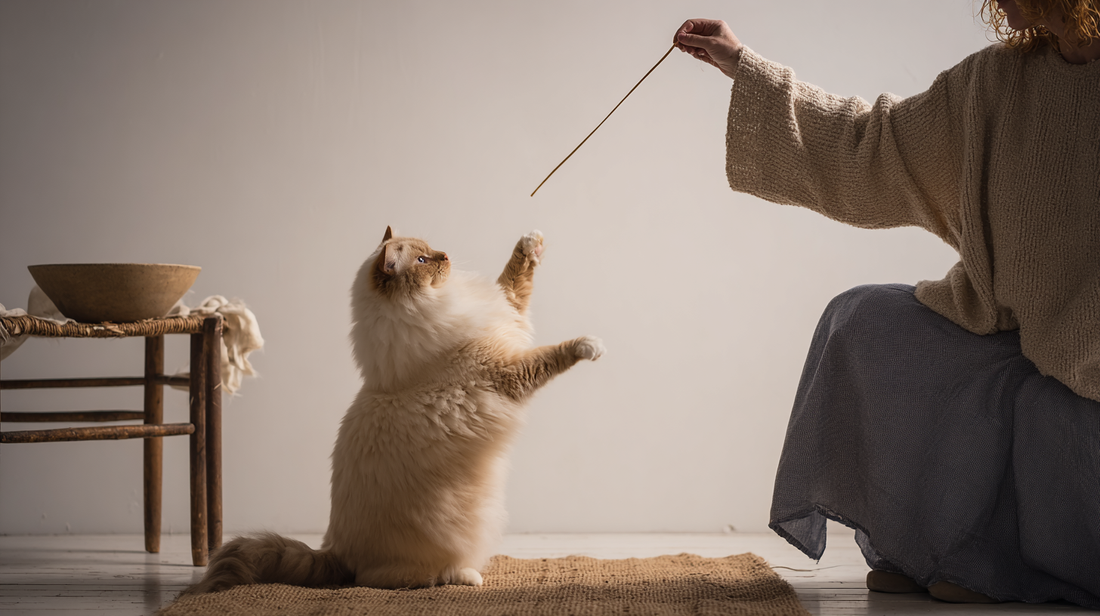Imagine your beloved feline companion, purring contentedly in your lap, seemingly healthy and full of life. Yet a silent condition might be brewing within their heart: Hypertrophic Cardiomyopathy (HCM), the most common heart disease affecting cats. What makes HCM particularly concerning is that many cats remain asymptomatic for extended periods. For some, HCM can progress to serious complications, including chronic heart failure, dangerous blood clots (arterial thromboembolism or ATE), or even sudden cardiac death.
While most discussions typically center on physical changes in the heart, emerging research highlights another important factor: oxidative stress. Understanding this concept could provide another vital piece of the puzzle in maintaining your cat's heart health. This post explores the connection between oxidative stress and HCM in a clear, accessible way that's directly relevant to you and your feline companion.
Summary
What is feline hypertrophic cardiomyopathy?
Hypertrophic cardiomyopathy is characterized by abnormal thickening of the heart muscle, primarily in the left ventricle, which is the heart's main pumping chamber. In most feline cases, this thickening occurs without any identifiable underlying cause, a condition termed idiopathic hypertrophic cardiomyopathy.
HCM presents in various ways across the feline population. Many cats with subclinical or asymptomatic HCM live seemingly normal lives without outward indications of disease. However, some eventually develop symptoms related to the heart's ineffective pumping, leading to heart failure that manifests as breathing difficulties or increased lethargy.
Altered blood flow in the thickened heart can increase the risk of arterial thromboembolism (ATE), a painful condition potentially causing sudden hind leg paralysis. Irregular heart rhythms (arrhythmias) may also occur in affected cats.
Given these potentially severe consequences, early HCM detection is crucial, even in apparently healthy cats. Certain breeds have a higher predisposition to HCM, suggesting strong genetic components to the disease. Maine Coons, Ragdolls, British Shorthairs, and Norwegian Forest cats show higher incidence rates, highlighting the importance of vigilant heart health monitoring if your cat belongs to one of these breeds.

Unpacking oxidative stress: The imbalance within
Our bodies, including your cat's, naturally produce substances called Reactive Oxygen Species (ROS), which are byproducts generated during normal metabolic processes like energy production. In balanced amounts, ROS play important roles in various cellular functions.
Problems arise when an imbalance occurs between ROS production and the body's neutralization capacity. This imbalance is what we call oxidative stress. Imagine tiny factories in each cell producing these reactive substances with dedicated cleaning crews (antioxidants) efficiently clearing them away. If the factories produce excessive waste (ROS) overwhelming the cleaning crews, damage begins to accumulate.
Uncontrolled ROS overproduction harms cells by damaging essential components: proteins crucial for cell structure and function, lipids forming cell membranes, and even DNA, the cell's genetic blueprint. This progressive damage leads to cell injury and potentially cell death throughout the body.
Fortunately, your cat's body has defense systems against this threat: antioxidants that neutralize harmful ROS. Key players in this defense include specialized antioxidant enzymes. A recent study examined several important antioxidant enzymes in cats with HCM:
Superoxide Dismutase (SOD): Converts the harmful superoxide anion (O₂⁻) into hydrogen peroxide
Catalase (CAT): Breaks down hydrogen peroxide into harmless water and oxygen
Glutathione Peroxidase (GPx): Helps detoxify hydrogen peroxide, also producing water
Research findings: Oxidative stress in cats with hypertrophic cardiomyopathy
To understand the potential link between oxidative stress and feline hypertrophic cardiomyopathy, researchers evaluated the oxidative state in cats diagnosed with HCM (both symptomatic and asymptomatic) compared to healthy control cats.
The study measured antioxidant enzyme activity levels with these revealing findings:
Key enzyme activity results
Superoxide Dismutase (SOD): SOD activity was significantly lower in both symptomatic and asymptomatic HCM cats compared to healthy cats. This suggests that cats with HCM, even without outward disease signs, may have a reduced ability to neutralize the damaging superoxide anion.
Catalase (CAT): catalase activity was significantly lower in asymptomatic HCM cats compared to both symptomatic HCM cats and healthy controls. This intriguing finding suggests that early, asymptomatic HCM stages might feature a particular deficiency in the enzyme responsible for breaking down hydrogen peroxide. While catalase activity was also lower in symptomatic HCM cats compared to healthy cats, this difference wasn't statistically significant.
Glutathione Peroxidase (GPx): unlike SOD and catalase, glutathione peroxidase activity showed no significant differences between the three cat groups in the study.

Other oxidative markers examined
Total Antioxidant Capacity (TAC): this measures the overall blood plasma ability to neutralize free radicals. The study found no significant difference in total antioxidant capacity between healthy cats and those with either asymptomatic or symptomatic HCM.
Malondialdehyde (MDA): this marker assesses lipid peroxidation, which is fat damage caused by ROS. The study found no statistically significant differences in MDA levels between groups. This might seem surprising, as increased oxidative damage might be expected in heart conditions.
Study authors discussed potential reasons including differences in underlying heart disease causes compared to other conditions where MDA elevates, species-specific differences, or medication influence in symptomatic cats.
Overall, the findings indicate that an imbalance in specific antioxidant enzymes (superoxide dismutase and catalase) exists in cats with hypertrophic cardiomyopathy, even during asymptomatic disease stages.
What these findings mean for your cat
These findings provide intriguing insights into oxidative stress's potential role in feline hypertrophic cardiomyopathy. The fact that cats with HCM, even those without apparent symptoms, showed lower key antioxidant enzyme levels (SOD and catalase) suggests oxidative stress might contribute significantly to the development and progression of this heart condition.
Increased ROS production and reduced neutralization capacity could potentially contribute to the structural heart muscle changes seen in HCM, such as thickening (hypertrophy) and remodeling.
The observation that these antioxidant enzyme changes appear even in asymptomatic cats is particularly noteworthy for you as a cat owner. This raises the possibility that these alterations could be early disease process indicators, occurring before heart damage becomes severe enough to cause noticeable symptoms in your pet.
Routine examinations help with early detection of underlying health issues, including heart conditions like HCM. Your veterinarian has access to various diagnostic tools, including physical examinations and echocardiograms (heart ultrasounds), essential for diagnosing HCM in your feline companion.

Caring for your cat's heart health with practical steps
This research illuminates a fascinating aspect of feline hypertrophic cardiomyopathy: the presence of oxidative stress, characterized by lower specific antioxidant enzyme levels (SOD and catalase), even in asymptomatic cats. This suggests oxidative stress may play a significant role in HCM development and progression in your cat.
Here's what you can do to stay informed and care for your cat's heart health:
Be aware of breed-specific HCM risks.
Ensure your cat has regular veterinary check-ups. These routine visits are crucial for early detection of various health issues, including heart problems that might otherwise go unnoticed.
Discuss any concerns about your cat's heart health with your veterinarian. They can provide personalized advice and recommend appropriate diagnostics if needed for your specific pet.
Stay informed about ongoing feline HCM research. As our understanding of this complex condition evolves, new management approaches may emerge that could benefit your cat.
By staying informed and working closely with your veterinarian, you can actively safeguard your beloved cat's heart health and help ensure they enjoy a long, happy life by your side.
The information in this article is based on the following scientific publications:
Michałek, M., Tabiś, A., Pasławska, U. and Noszczyk-Nowak, A. (2020). Antioxidant defence and oxidative stress markers in cats with asymptomatic and symptomatic hypertrophic cardiomyopathy: a pilot study. BMC Veterinary Research, 16, 26.
Quintavalla, F., Basini, G., Fidanzio, F., Bussolati, S., Sabetti, M.C., Crosta, M.C., Grolli, S. and Ramoni, R. (2024). Blood plasma and urinary biomarkers of oxidative stress in cats with urethral obstruction. BMC Veterinary Research, 20, 163.
Looking for a solution? Start here
Stylla Calmness for cats
Supports relaxation and emotional balance with amino acid-based formulation
- Promotes emotional balance and relaxation
- Helps maintain balanced behaviour
- Supports healthy physiological equilibrium
Made in Switzerland with strict quality standards





